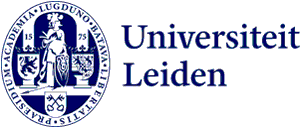
Extraordinary treasures on National Finds Day
Is it a prehistoric mammoth tooth or just an ordinary pebble? It was National Finds Day at the Dutch National Museum of Antiquities on Saturday 17 June, and Leiden University was one of the collaborating partners. Visitors could bring along treasures found in Dutch soil and ask about the origin of that bone they once found and that possibly medieval bead. Historians, archaeologists and fauna experts gave answers.
At a row of tables in the Temple Room at the Dutch National Museum of Antiquities, experts from different disciplines sit for hours identifying finds. This, the archaeological version of ‘Antiques Roadshow’, is part of the National Archaeology Days.
Bird flutes and pottery
The welcoming committee consists of archaeology students from Leiden University. ‘We’re the first line’, says master’s student Jesse Kuijt. ‘We look at the finds and send the finders to the right expert. There are experts in human remains, prehistory and the Roman Empire, for instance. They appraise the age but not the value of the finds.’
A mammoth tooth has already cropped up today, found at Maasvlakte, as well as a late-medieval bird whistle and a Bronze Age sword. Master’s student Annely Arends has mainly seen a whole lot of pottery. ‘Sometimes entire pots but often shards. We’ve also seen a few statues, bones and coins. Most finds have already been in people’s families for some time or were found in their back gardens or on the beach.’

Ulna
Father and daughter Quirijn and Hedwig Bongaerts have come to have a beach find identified. Eight-year-old Hedwig explains, ‘We found a bone at the beach at Wassenaar but didn’t know what it was.’ They got friends who are doctors to take a look first. They confirmed it was a bone but had no idea what creature it might have come from.
Fauna expert Dick Mol knows and can tell Hedwig that it is an ulna from the extinct steppe bison. ‘I’d never heard of it’, says Hedwig. ‘But it lived 25,000 years ago and was just a bit smaller than an African elephant.’ The bone will be given pride of place on the windowsill, says father Quirijn. ‘But our other find can go. I hoped it was a mammoth tooth but it turns out to be just a stone.’

Immaculate fibula
Gasps of admiration echo from the other side of the room. Expert Stefanie Hoss, who specialises in finds from the Roman period, is examining a truly exceptional find. ‘It’s a bronze dress pin, a fibula, in the shape of a dragon. The red decorations are glass or coral. It’s from the early Roman era, from the first century I’d say. It would have been worn by a chief or a rich merchant and is in good condition. You can still see late Celtic influences in the style.’
The lucky finder is experienced hobby archaeologist Friso Langen. ‘I found it with my metal detector in a town in Gelderland. When I removed it, I knew straight away it was something special.’ Langen has an extensive collection of finds at home, and the fibula will be given pride of place among them. But not until he has reported it because you are legally required to report archaeological finds in the Netherlands.
Finds database
Visitors don’t have to go far to report their finds: they can do so with PAN, Portable Antiquities of the Netherlands, which happens to be right next to the experts. ‘PAN is a national infrastructure organised by the ArcheoHotspots Foundation’, says Alexander van de Bunt, the national ArcheoHotspots coordinator. ‘We want to encourage public participation and make it easy to report so-called chance finds. PAN has been around since 2016 and now has an extensive database where you can search through tens of thousands of finds, sometimes with their associated stories.’
It's worth noting that only finds that can reasonably be assumed to be of archaeological value need to be reported. Hedwig’s ulna doesn’t have to therefore but Friso Langen’s fibula will most certainly appear on the site soon.
Text: Julie de Graaf
Photos: Robbert-Jan Looman
Translation: Marianne Orchard
